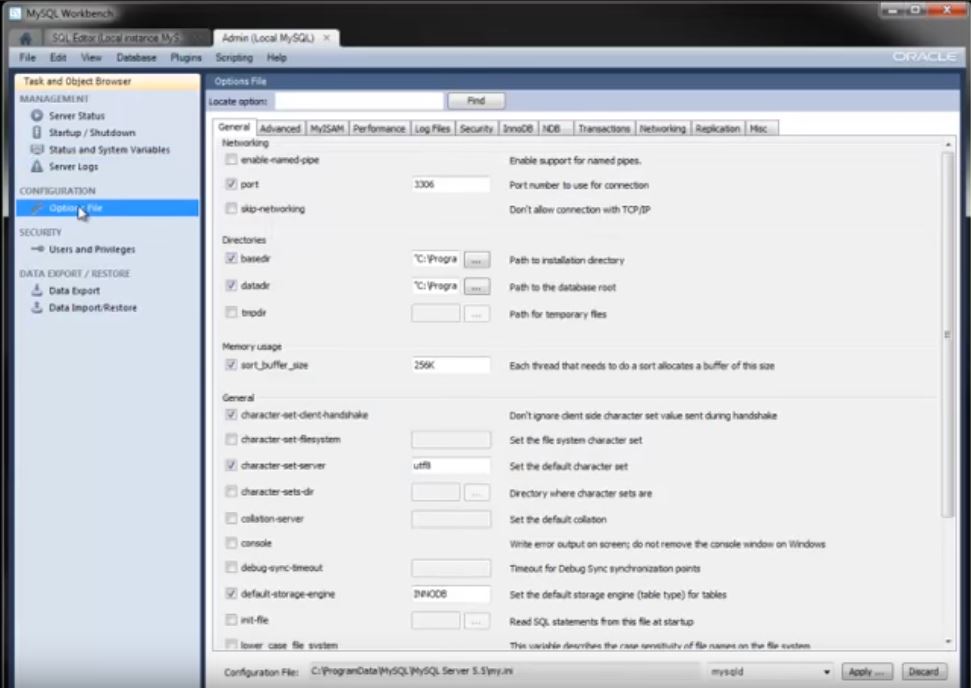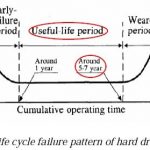MySQL Workbench 8.0.29 – Download for Windows

| Latest Version: | 8.0.29 |
| Platform: | Minimum: Windows XP |
| Author: | Official website |
| File size: | ~ 42 MB |
| License: | Free/GNU |
| Security level: | 100% Safe |
MySQL Workbench is a useful visual tool for MySQL databases
MySQL Workbench is a tool that allows you to create an entity-relationship diagram for MySQL databases. You can use it to design a new database layout, document one that already exists, or carry out a complex migration.
The app produces a visual representation of the database tables, views, stored processes, and foreign keys. Also, it can sync the development model with the actual database.
This database tool can also generate the necessary script to create the database that was created in the outline; it is compatible with DBDesigner 4 database models and supports the newly incorporated features on MySQL 5.
One of the key features of MySQL Workbench is the visual layout. After creating the needed tables, you can generate ER diagrams to establish the connections easily. As far as large databases are concerned, it’s possible to group tables using colored layers.
Other useful features for data modeling are schema synchronization and validation, reverse/forward engineering, syntax highlighting, error parsing while typing, and code folding, which should help you a long way when working with MySQL Workbench. The scripting shell allows you to create Python or Lua scripts, plugins, and modules.
The ‘Server Administration’ module permits you to configure database instances, user account, and session management settings, together with log file browsing options.
Screenshots:Note:
What’s new:
– Fixed:
– InnoDB: The minimum I/O buffer size calculated during an index creation operation did not align with the I/O block size, permitting a record to exceed the buffer boundary. (Bug #33570629)
– InnoDB: The sync_array_detect_deadlock algorithm used by the semaphore deadlock checker in debug builds was simplified in terms of code and time complexity, and an implementation of the algorithm was introduced for use in release builds. (Bug #33538505)
– InnoDB: The ut::make_unique library function in the InnoDB sources now permits specifying the type of field allocated. (Bug #33538461)
– InnoDB: A Performance Schema instrumentation was added for tracking redo log buffer memory allocations. (Bug #33527660)
– InnoDB: Warnings printed to the error log for long semaphore waits did not provide information about the latch owner. (Bug #33509386)
– InnoDB: A latch release and reacquisition mechanism was introduced to reduce the amount of time that threads spend in critical sections protected by a global lock system latch. (Bug #33502610, Bug #33563523)
– InnoDB: A hole punch operation on Windows caused a failure. The operation was performed as an overlapped (asynchronous) operation, which requires a OVERLAPPED structure containing a handle to an event object. The OVERLAPPED structure was not provided. (Bug #33496778)
– InnoDB: The ut_time() infrastructure in the InnoDB sources was replaced with a type-checked standard library implementation. (Bug #33460092)
– InnoDB: Numerous Trying to access missing tablespace errors were printed to the error log following a restore operation. (Bug #33437625)
– InnoDB: Performance Schema aware ut::make_unique and ut::make_shared memory management library functions were added to the InnoDB sources. Similar functions (ut::make_unique_aligned and ut::make_shared_aligned) were added for types with extended alignment. (Bug #33420694)
– InnoDB: The buf_validate() function in the InnoDB sources was optimized, improving performance on debug builds.
– Thanks to Hobert Lu for the contribution. (Bug #33417058, Bug #104967)
– InnoDB: On a NUMA-enabled system, the page size of memory chunks allocated to the buffer pool did not align with the system page size in certain scenarios, causing in the following error: Failed to set NUMA memory policy of buffer pool page frames to MPOL_INTERLEAVE. (Bug #33406701)
– References: This issue is a regression of: Bug #32714144.
– InnoDB: Two instances of std::unique_ptr with mem_heap in the InnoDB sources now use the Scoped_heap() wrapper, which uses a stateless function object instead of a pointer to a function. (Bug #33405520)
– InnoDB: The m_end_range flag in the prebuilt struct, which is set to true when the end of the range is exceeded while populating the prefetch cache, was not set to false when the prefetch cache was reset (initialized). As a result, in cases where the end of the range is not exceeded and the handler is reused, the m_end_range flag could be set incorrectly the next time the prefect cache is used. (Bug #33384537)
– InnoDB: Column metadata in the data dictionary was not updated when a new table ID was assigned to a table after discarding the table’s tablespace during a table import operation. (Bug #33319149)
– InnoDB: Setting the innodb_interpreter debug-only system variable to NULL caused a failure. (Bug #33316661)
– InnoDB: Full-text index creation file management was improved. (Bug #33270893)
– InnoDB: An update operation that inserted a new row into a temporary table used for aggregation caused the temporary table to be moved to disk and the update operation to be retried on the new on-disk temporary table. A BLOB pointer in the record data prepared before the temporary table was moved to disk was rendered stale, causing a failure. (Bug #33242407)
– InnoDB: Memory allocation is now performed by a new standards-compliant custom memory allocator which is compatible with Performance Schema. (Bug #33159210)
– InnoDB: A race condition between threads attempting to deinitialize and initialize statistics for the same table raised and assertion failure. (Bug #33135425)
– InnoDB: An innodb_flush_log_at_trx_commit setting other than 1 or a long running transaction could have resulted in an inconsistent rate of redo log flushing. (Bug #33128461)
– InnoDB: Allocation of large pages is now handled by a library designed to handle this. In cases where the large page allocation mechanism cannot be used, a fallback mechanism allocates regular aligned pages. Fallback can occur when large page address space is exhausted, when large page support is disabled by the underlying hardware or operating system architecture, or when large page support in MySQL is disabled explicitly (–large-pages=0). Occurrences of ut_allocator functions for allocation and deallocation of large pages have been replaced by the new library functions. (Bug #33119009, Bug #33118309, Bug #33149501, Bug #32135935)
– InnoDB: Handling of regular 4K page-aligned allocations is now performed by a self-contained library which is compatible with Performance Schema. (Bug #33118362)
– InnoDB: Functions belonging to a new InnoDB library responsible for dynamic storage management of suitably aligned types has replaced the functions previously used for this purpose. (Bug #33110341)
– InnoDB: Dynamic allocation of suitably aligned types is now handled by a library which is compatible with Performance Schema. (Bug #33110312)
Also available:







